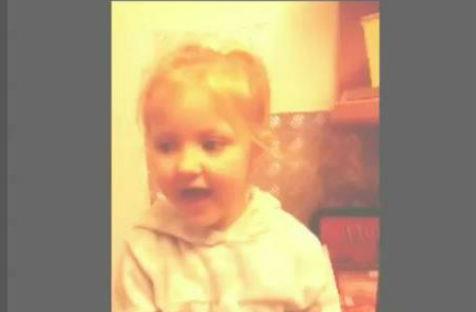With submissions to the Australian Law Reform Commission review on Copyright due at the end of July, creators need to understand the problems.
Sabina Wynn, the Executive Director of the Australian Law Reform Commission and Professor Jill McKeough, the Commissioner in charge of the Copyright Inquiry, held an online conversation about the current problems with copyright for individuals, businesses, museumss and the education sector.
Sabina Wynn: The ALRC has just released a Discussion Paper for this Inquiry, and I was wondering if you could just outline, Jill, what’s actually wrong with the Copyright Act?
Jill McKeough: A lot of people have told us the Copyright Act is very out of date. It’s technology specific and it doesn’t recognise what consumers want to do with copyright material. Back in 2006 the Attorney-General said that copyright law needs to be more sensible and it needs to ensure that people aren’t accidentally infringing all the time.
SW: So can you give us some examples of that?
JM: Well one example is, if you post a video of your 3-year old on YouTube singing a One Direction song— that’s an infringement of copyright at the moment.
SW: And what about businesses? Do they have concerns?
JM: Lots of concern from business. We’ve been told that the Act prevents business from being innovative and at times causes difficulties in introducing new services and products into Australia. So for example, even the use of search engines is infringement. Another issue is cloud services and cloud storage. It’s difficult for companies to set up new services and products using the internet because of the provisions of the Copyright Act at the moment.
SW: And in the education sector, for example schools, universities or TAFEs, I suppose they’ve got their own specific concerns?
JM: At the moment the Act allows schools, universities and TAFEs to use copyright material under what’s called a statutory licence scheme. These again are very technology specific and are seen to be very rigid and out of date and not really suited to the digital environment.
SW: I know that we’ve heard from a lot of libraries, museums and art galleries. What are some of their concerns?
JM: Well they have difficulties in doing activities to preserve our cultural heritage and letting people have access to important material. I’ll just give you one example. Next year is the hundredth anniversary of the start of World War One, and around the country a lot of libraries and museums have got, for example, war diaries. Now, once these are published they come into copyright and it’s technically an infringement of copyright to be disseminating them or letting the public see them. And lots of libraries and museums would like to be able to unlock their World War One archive now the centenary is approaching.
SW: And so, a lot of problems then. What’s the ALRC actually been asked to do?
JM: Well one of the concerns we’ve got is of course to make sure the owners of copyright material don’t lose their rights and the chance to develop new ways of using copyright material to earn a living, and what we’ve been asked to do is to review the Act to see whether it needs amendment to allow Australia to fully participate in a modern digital economy. We have terms of reference which ask us to see whether the Act is working properly, to allow Australians to access and use and interact with copyright material. And I’ve mentioned how out of date it’s thought to be, particularly with the internet and new and developing ways of using copyright material. We’ve all got lots of clever devices now that we use to access music, films and books and other things protected by copyright. One of the things we’ve specifically been asked to look at is whether Australia should introduce a Fair Use provision to allow more flexible use of copyright material. So for example, is it really going to hurt the interests of the copyright owner to have your 3-year old singing a song on YouTube.
SW: There seems to be a lot of passion about copyright law, and there’s some fairly polarised views out there. What do you think are the key tensions in this Inquiry?
JM: There certainly are polarised views. Copyright owners fear that freeing up copyright law will allow piracy to increase if changes to the law are made. And the other issue is about making it more uncertain. So, if we introduce reforms, there won’t be a lot of case law, there won’t be a lot of precedent, and it’s the difficulty of adjusting to that new environment that copyright owners fear. Users say that that the Act is preventing innovation and stopping access to knowledge and is increasingly irrelevant.
SW: So with all these differences of opinion, how are you actually going to come to terms with balancing all the different views.
JM: We’ve got five important criteria that we’re going to use in assessing all the reforms, and we’re going to filter everything through these. So let me just say what they are. First of all, the most important thing really is acknowledging and respecting the efforts of authors and creators of copyright material. Secondly, we want to make sure that the incentives to create remain, in other words that copyrights and property rights continue to be respected. We need to promote fair access and wide dissemination of information, and we want to provide rules that are flexible and adaptable so that the Copyright Act doesn’t go out of date as quickly as it usually does. And we also need to provide rules that are consistent with our international obligations.
SW: Well the Discussion Paper has a number of proposals. Can you just outline what you think the key proposals are?
JM: I suppose the one that’s grabbing all the headlines is that we’re recommending that Australia should introduce fair use into copyright law. Fair use is a defence to copyright infringement which allows consideration of use of copyright material by asking “is this fair?”.
SW: So, could you give us an example?
JM: Well, I’ve used the example of putting your favourite song in a home video and loading it up to YouTube. Is it fair to do that? Is it fair to the copyright owner? Is it something that’s not going to damage their interests? Is it fair to use a search engine to find information? Is it really going to stop the person whose website is being technically copied from earning a living? We think probably not. Is it fair to allow publication of documents in old archives to be made public? That’s the sort of thing that will be determined on a case by case basis. There’s many other examples of course, and the statue doesn’t define what is fair, but we have a pretty good idea developed over many years as to what might be allowed and what might not be allowed.
SW: And, so, there must be, well there are a lot of other proposals. What are some of the other ones you’re looking at?
JM: Well, Australia already has a concept of fair dealing for certain purposes, and fair use really is an extension of this. But, if fair use is not adopted in Australia, we’ve also made some alternative recommendations on fair use and some other examples of where that might be used. As well as that we’ve got other reform proposals relating to the replacement of statutory licenses with voluntary licensing which is more adaptable to the digital environment. We’ve been told that the Act is out of date and too technologically specific, so we’ve got a few recommendations that tidy up that sort of thing. There’s a concept of orphan works in copyright law, and that relates to material that is lingering in archives or stored away somewhere and no one knows owns it. No one can trace who is the copyright owner – and these are called orphan works. The National Library of Australia alone has over 2 million unpublished items in its collection, and a significant number of these are orphan works. So we’ve made some proposals about those. And we’ve also made some proposals about re-transmission of free-to-air broadcasts and some other broadcasting aspects of the Act.
SW: We received over 290 submissions to the first consultation paper in this Inquiry, the Issues Paper. Now you’ve released the Discussion Paper calling again for submissions from stakeholders to help us work towards final recommendations. You’ve obviously done a lot of consulting and there’s more consulting coming up in the next few months. What’s the next stage of the Inquiry?
JM: Well we’re still very much in the process of deciding the best way forward for reforming the Copyright Act and we’re still very open to ideas about this. We talked to a lot of people about what they thought the issues were, and we talked to a lot of people after we developed the 55 questions based on those issues so there’ll be further consultation and of course we hope to get formal submissions.
SW: So the final Report is due to the Attorney-General at the end of November. The ALRC is also using a discussion board for consultation. How do you think that will work?
JM: Well, we’re very interested in this. We’re going to be opening an online discussion on the website shortly. We’re very keen to hear from people who may not want to or be able to make a formal submission. They can just make a quick comment on the discussion board. We’d particularly like to hear from individual creators and users about the sorts of things they want to be able to do with copyright material and what they think ‘fair use’ might look like. So, if people keep an eye out for the Twitter feed or subscribe to our e-news, they’ll know when the discussion begins.
SW: Thanks Jill. And just a reminder that submissions to the Discussion Paper are due to the ALRC at the end of July.
Go the Australian Law Reform Commission to make a submission or join the online discussion about fair use.





